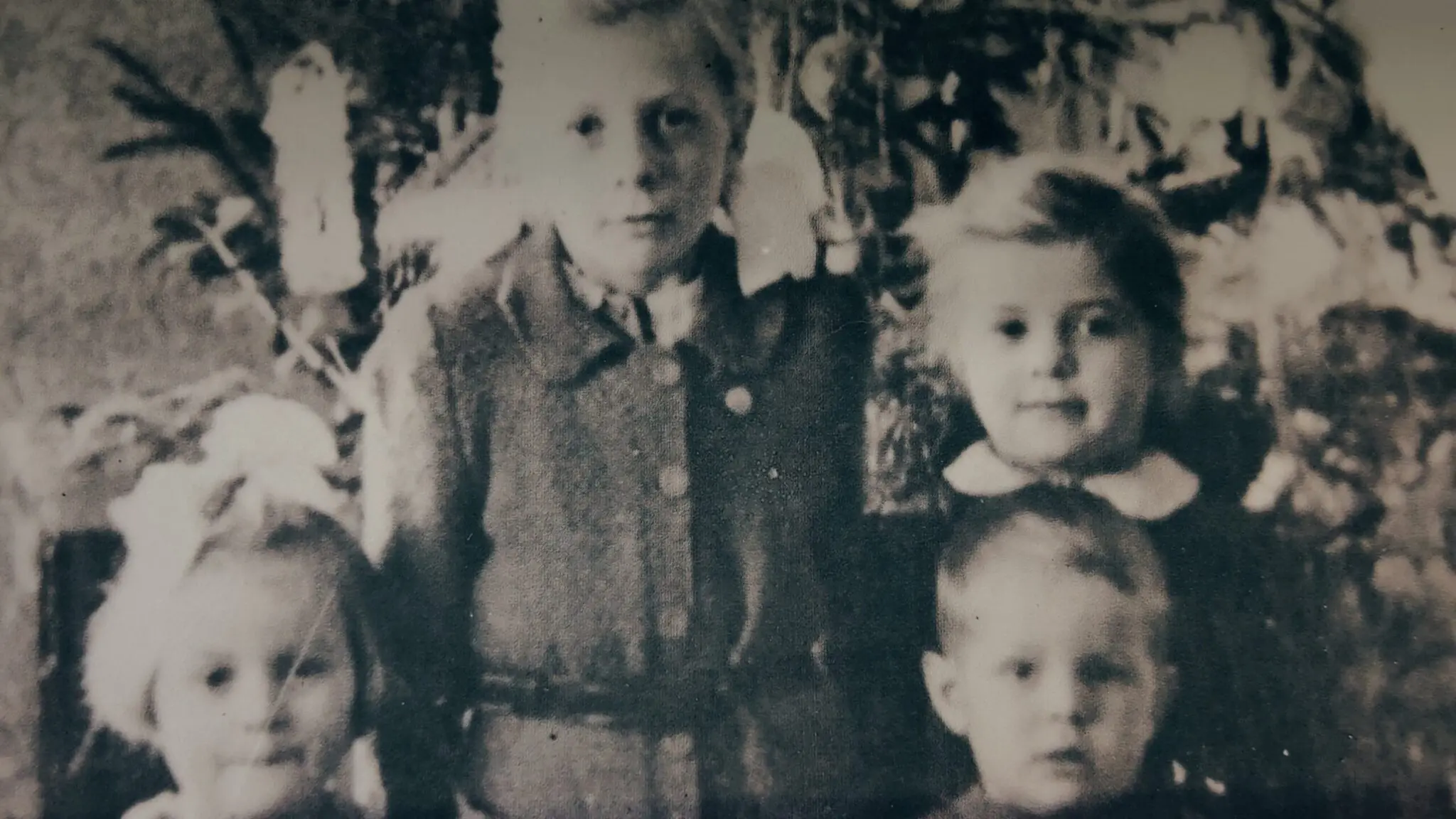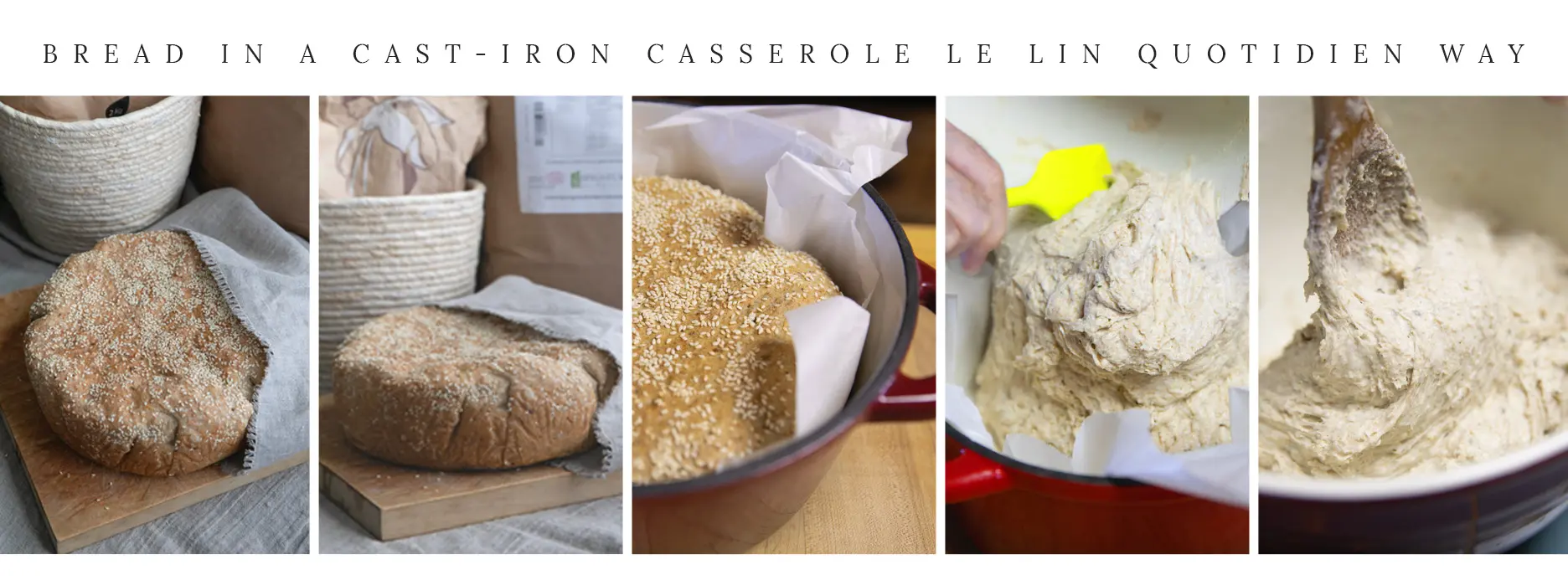 Simplified Casserole Bread Le Lin Quotidien Way
Simplified Casserole Bread Le Lin Quotidien Way
What a pleasure it is to share with you our simplified, no-knead pain cocotte recipe! This bread, with its beautiful crunchy crust just the way we like it, is made with wonderful organic flours from Moulin de la Seigneurie des Aulnaies in Saint-Rock des Aulnaies. It’s ready in less than four hours, including baking. It’s a tasty, nutritious bread, thanks to stone-ground flours grown in the magnificent Lower St. Lawrence region near the Moulin.
Starting up the immense 11-ton, 24-foot-high, 6-foot-wide bucket wheel of the Moulin banal des Aulnaies is a unique sensory experience in itself: the excitement begins as soon as you see the water enter the mill, fill the first buckets and pour from one to the next. With just a few buckets filled, this gigantic wheel is launched on the momentum of the water’s power, with a clatter of gears as the whole mill shakes and creaks beneath our feet. We share a feeling of sacredness with the other spectators, and all are filled with admiration!
In fact, why not experience it for yourself and pay a visit there in these troubled times with our American neighbor?
You’ll need a large glass bowl (the dough sticks more to the sides of melamine bowls) to make the mixture, and a 5.2-liter enameled cast-iron casserole lined with parchment paper to avoid breaking the enamel when baking the bread. Sprinkle integral wheat flour over the parchment paper on the bottom of the casserole.
Recipe
Ingredients
2 cups all-purpose white flour or organic unbleached white flour from Moulin de la Seigneurie des Aulnaies + about 1/2 cup to obtain the desired consistency
1 cup organic spelt flour from Moulin de la Seigneurie des Aulnaies
1 cup organic integral wheat flour from Moulin de la Seigneurie des Aulnaies
1/3 cup organic hulled hemp seeds
2 tsp. salt
Sesame seeds for the top of the bread
2 cups water
1 tbsp. yeast (we buy yeast in Fleishman jars, which cost less, instead of envelopes)
1 tbsp. honey or brown or white sugar
Preparation
Warm the water in the microwave directly into the measuring cup for approx. 1? minutes. Add honey and stir. Add yeast and allow to rise.
Meanwhile, mix together the flours and hemp seeds, except for the 1/2 cup excess flour, which will be used to obtain the desired consistency.
Make a well and pour in the water + yeast. Mix vigorously until all the flour has been absorbed. Then add more or less the remaining half-cup of flour to obtain a semi-sticky dough.
Cover the bowl and leave to rise for about 1 hour.
Deflate the dough by loosening it from the edges of the bowl with your hands or an utensil of your choice, using water (don’t be afraid to use as much water as you need to loosen the dough from the edges).
Pour the batter into the casserole dish.
Moisten the top of the dough with water and add the sesame seeds. Tap with the utensil of your choice to ensure that the sesame seeds adhere to the dough.
Let rise a second time for about 45 minutes (the second rise always takes less time than the first).
Note: rising time is always related to room temperature. If it’s cool in your house, the dough will take longer to rise.
Cooking
Preheat oven to 400 degrees F (or 375 if you have a convection oven, or if your oven is hotter than most). Place the casserole in the oven for 30 minutes, with the lid on. Remove the lid and bake for a further 30 minutes. Remove your loaf from the oven and leave to cool on a wire rack.
Keep your bread fresh and warm in our pure linen bread bag for the first day to prevent the crust from softening.
The next day, to prevent the bread from drying out, place it in a plastic bag.
Some people prefer to keep this type of bread in the pure linen bread bag.
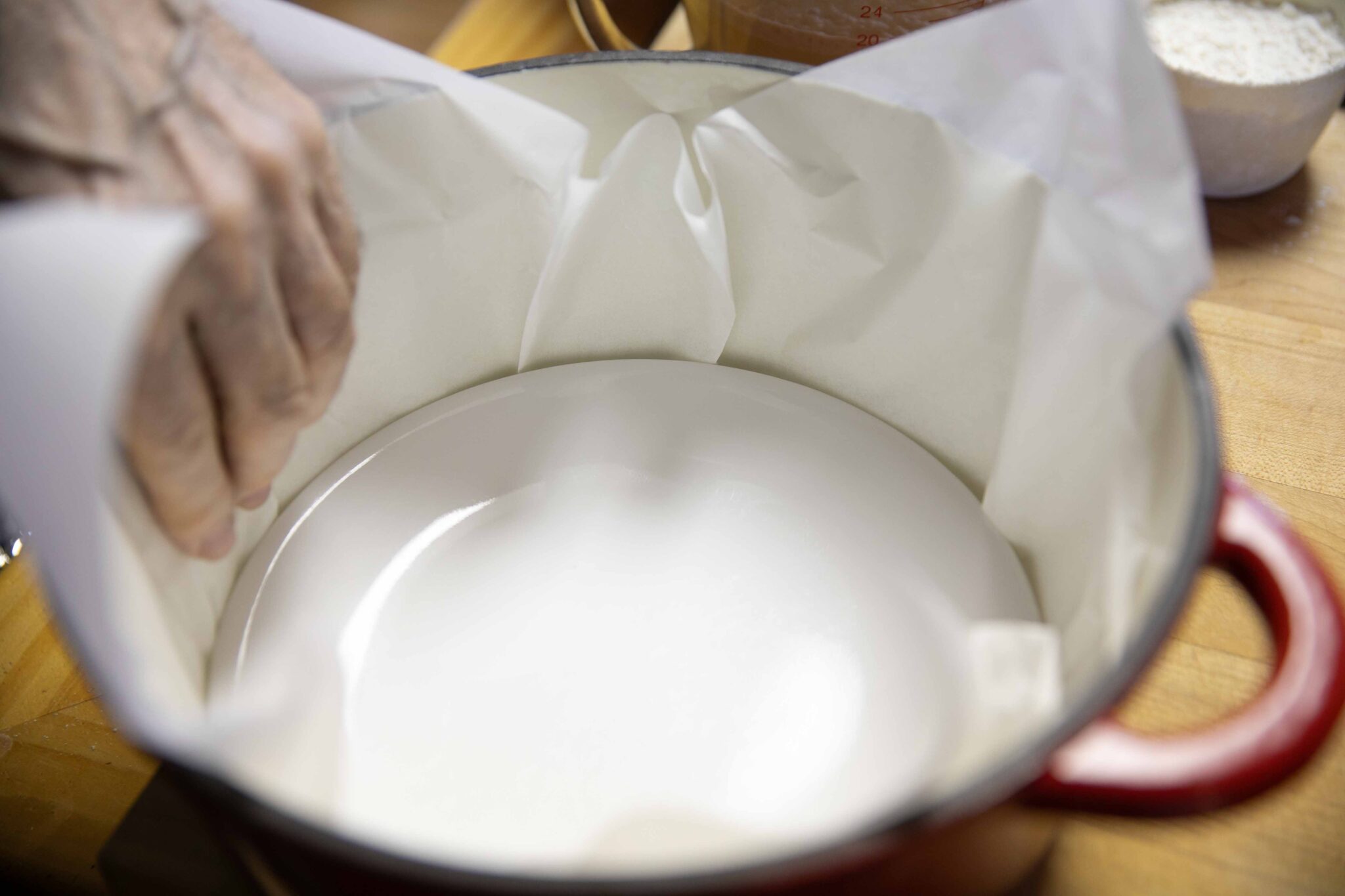
It’s easy to line the casserole with parchment paper by placing a plate of the right size in the casserole, then shaping the parchment paper around the sides of the casserole. Once the paper has conformed to the shape of the cocotte, simply press down on the edge of the plate to tip it down and remove it easily. Sprinkle integral wheat flour over the parchment paper at the bottom of the casserole.
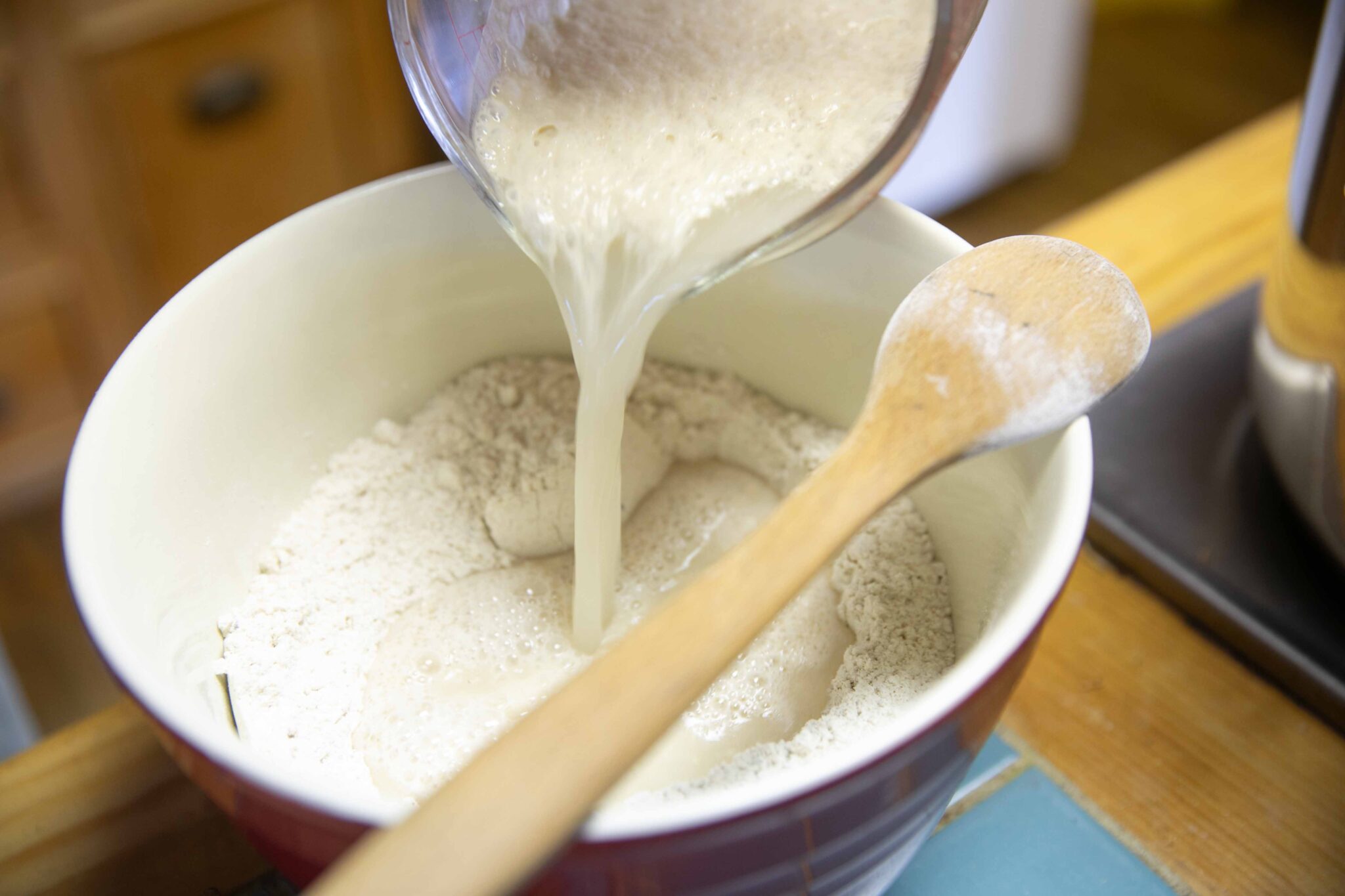
Pour the water + yeast into the bowl with the flours and hemp seeds. Stir vigorously.
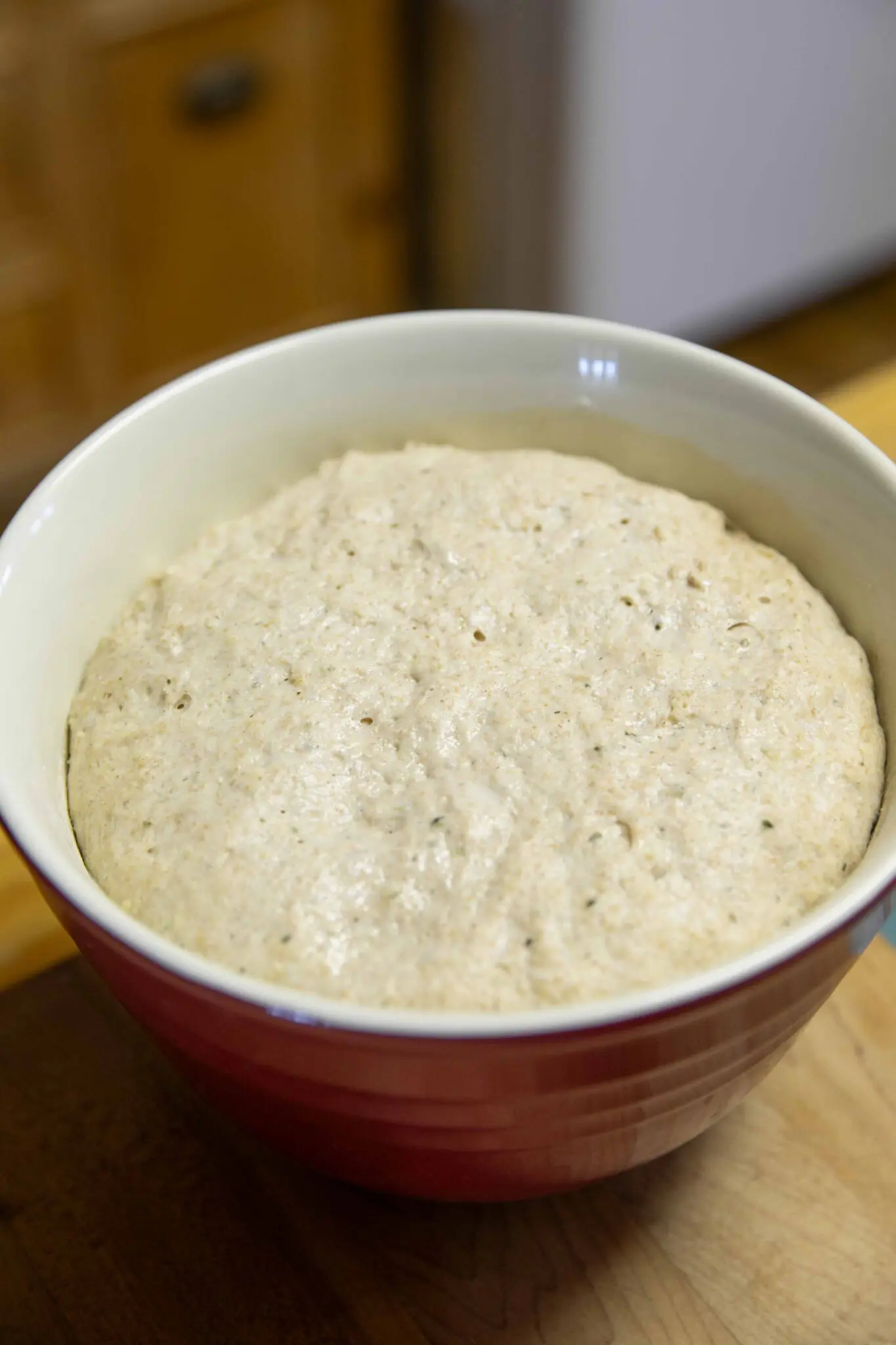
The dough first rises in the glass bowl. After about 1 hour, the dough has risen as shown in the previous photo.
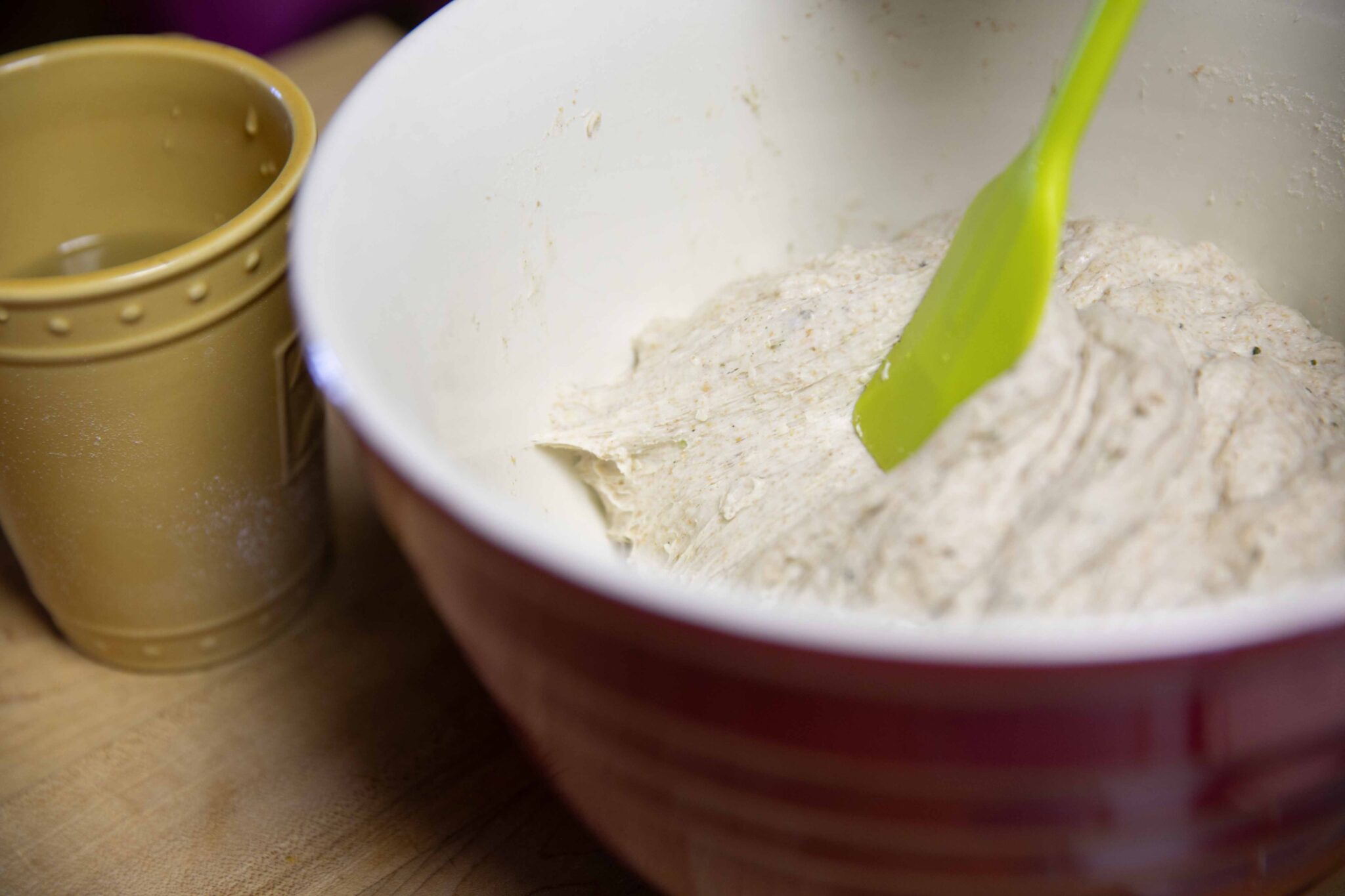
Deflate the dough by loosening it from the edges with water. Use your hands or an utensil of your choice.
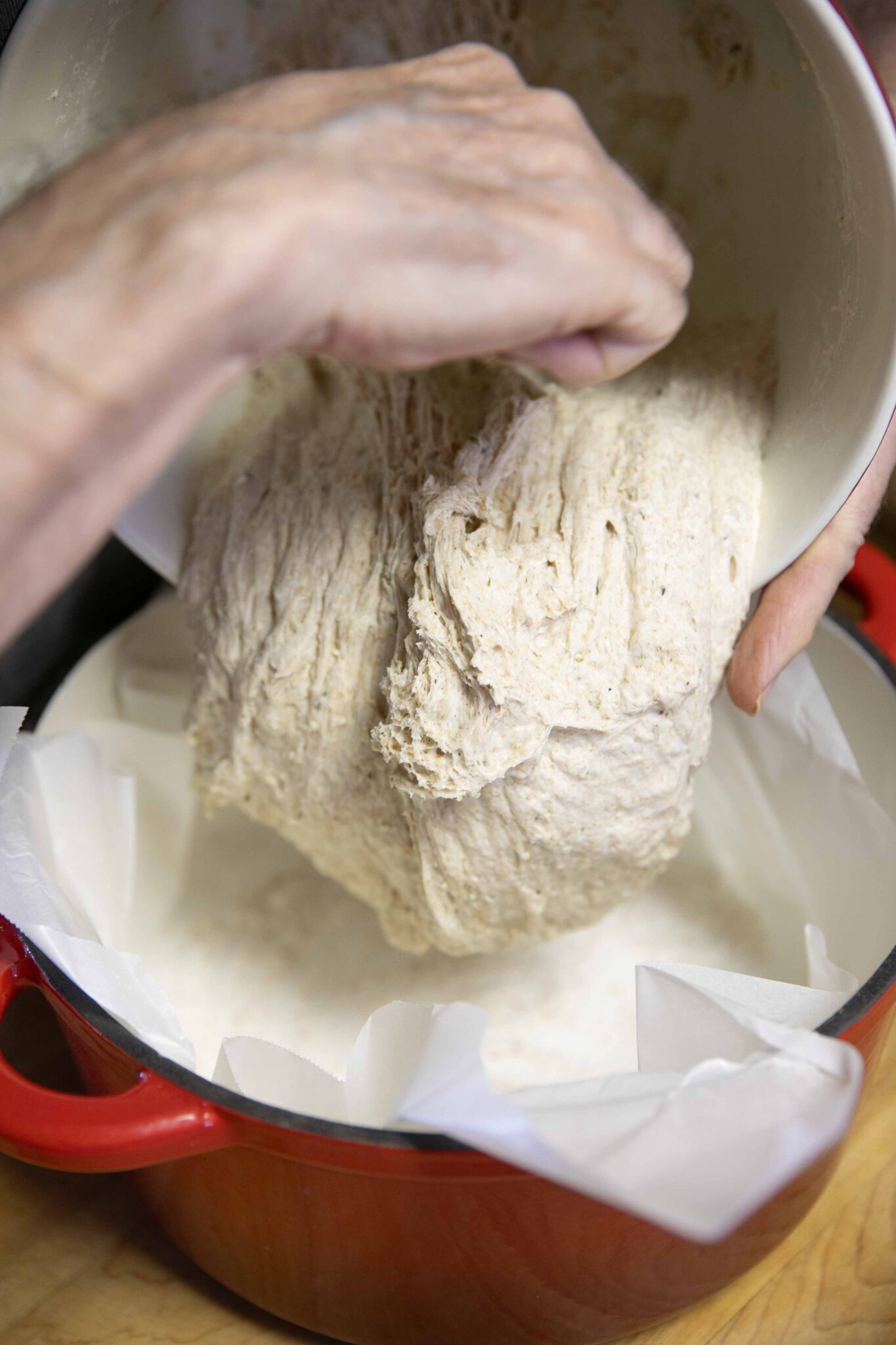
Pour batter into casserole dish. Moisten the dough with water and sprinkle with sesame seeds (a large quantity!). Leave to rise a second time for around 45 minutes.
Bake for a total of 1 hour (30 minutes with the lid on and 30 minutes without), at 400 degrees F.
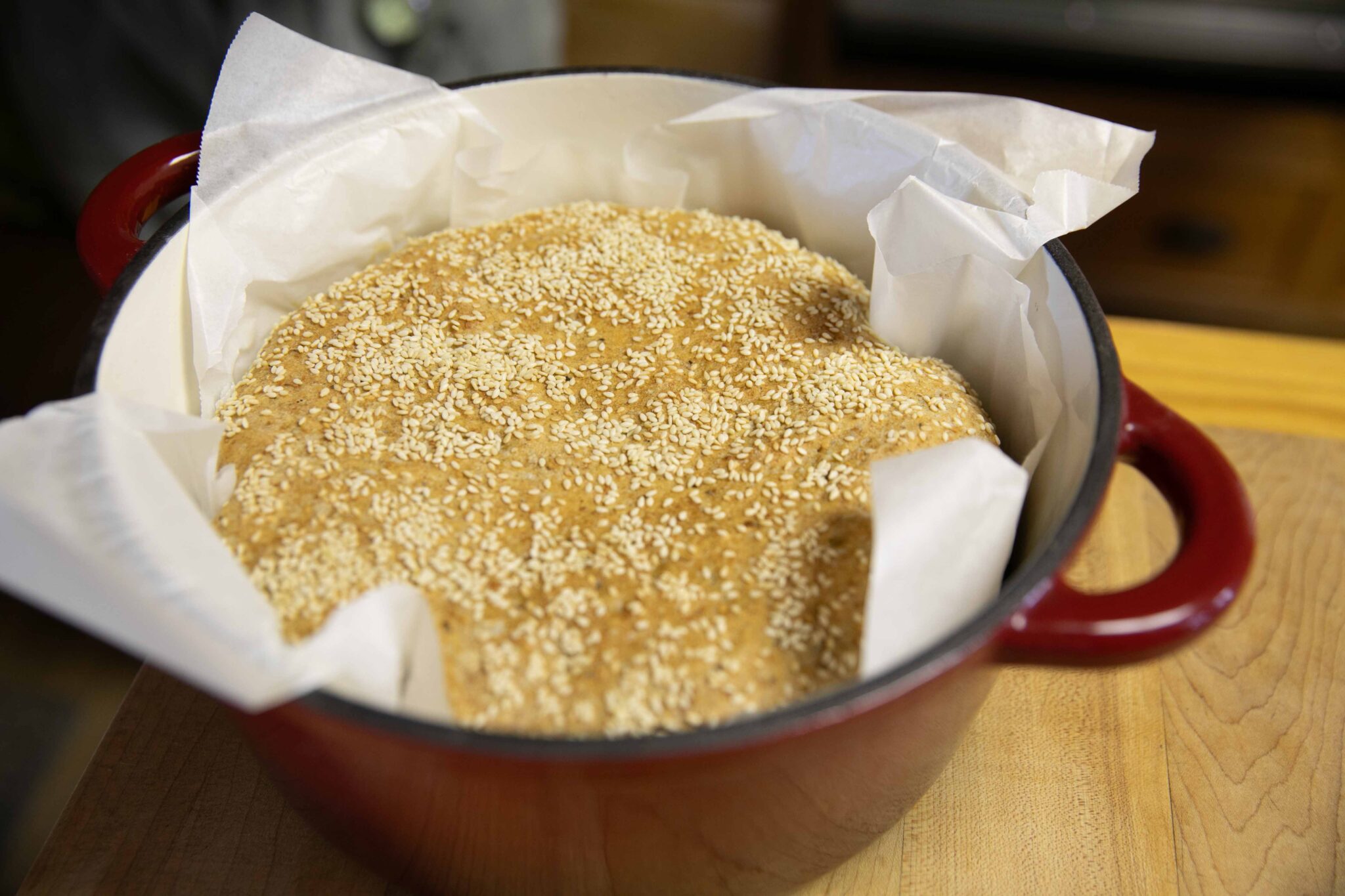
Remove from oven, remove parchment paper and cool. Enjoy!

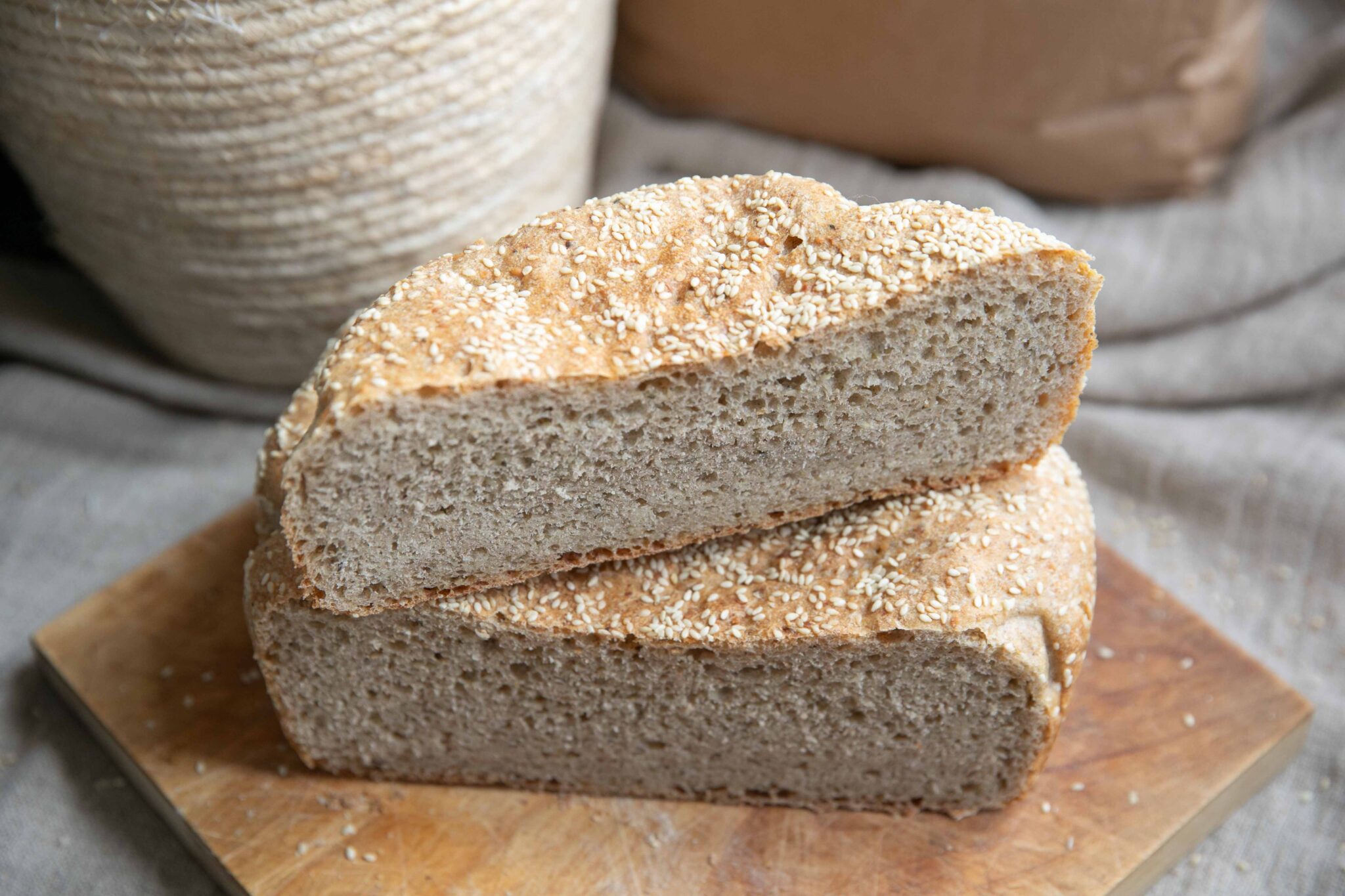

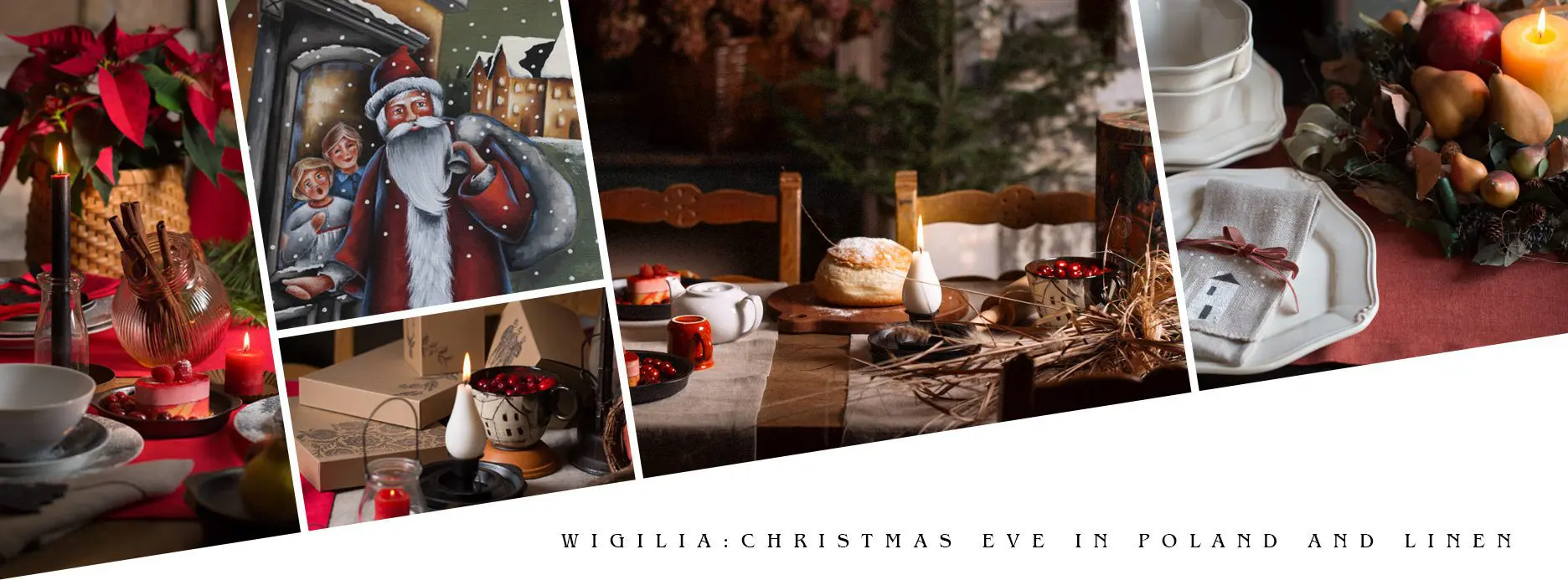 This Christmas 2023, I’d like to pay tribute to the Polish Christmas Eve tradition, Wigilia, because I was lucky enough to be introduced to it last year by a great Polish lady, Ela Glinka, who bought my products on the site to offer as a very special Christmas gifts. And also, because I import my linen from the Baltic countries for the good reason that we haven’t produced textile linen in Quebec or Canada for a long time now, and that this linen is absolutely magnificent. For Ela, linen is also linked to precious childhood memories. Let her tell us the story and inspire us!
This Christmas 2023, I’d like to pay tribute to the Polish Christmas Eve tradition, Wigilia, because I was lucky enough to be introduced to it last year by a great Polish lady, Ela Glinka, who bought my products on the site to offer as a very special Christmas gifts. And also, because I import my linen from the Baltic countries for the good reason that we haven’t produced textile linen in Quebec or Canada for a long time now, and that this linen is absolutely magnificent. For Ela, linen is also linked to precious childhood memories. Let her tell us the story and inspire us!